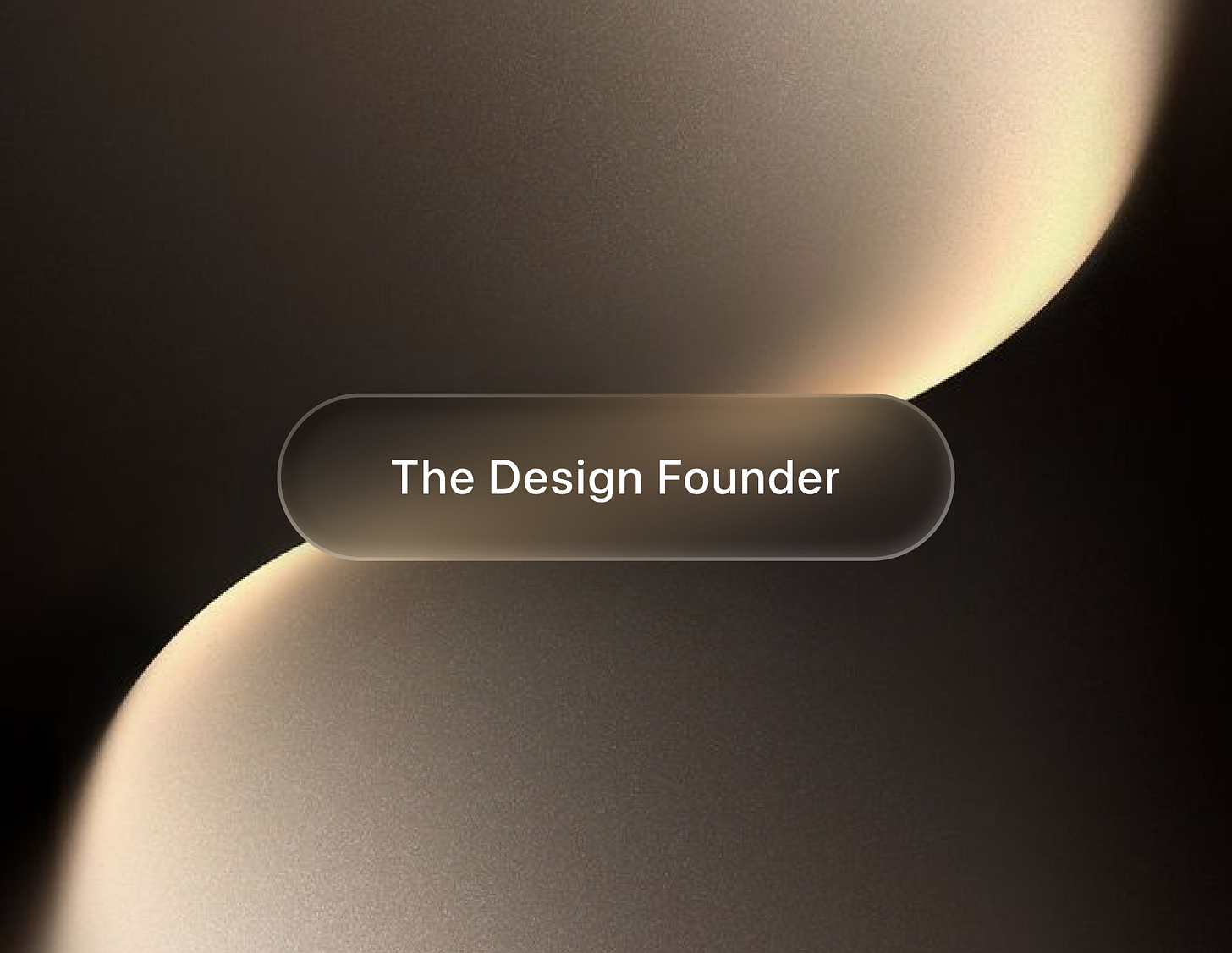The Golden Age of the Design Founder
There’s a pattern I keep noticing in the most successful founders, and it’s not what I expected. It’s not that they’re engineers or designers, it’s that the best ones think like designers, regardless of their background.
This matters because it contradicts the conventional wisdom about what makes a good founder. For decades, the archetypal founder was an engineer. There were good reasons for this. Starting a company meant building something, and engineers were the people who could build things. But I think we’ve been confusing a historical accident with a law of nature.
The thing about historical accidents is that they persist long after the conditions that created them disappear. And the conditions that made engineering the obvious path to founding are disappearing faster than most people realize.
What’s actually hard now
Here’s what’s really happening: the bottleneck in startups is shifting from “can you build it” to “do you know what to build.” That might sound like a subtle distinction, but it changes everything.
When the bottleneck was building, engineers had an obvious advantage. They could turn ideas into reality without the coordination cost of explaining what they wanted to someone else. Speed mattered more than precision. You needed to iterate fast, and iteration was fastest when you could code.
But as tools improve (and they’re improving exponentially now), the ability to build is becoming less of a constraint. It’s not that building is easy, it’s that the gap between having a clear vision and manifesting it is shrinking. What’s becoming more valuable is the clarity of vision itself.
This is where something interesting reveals itself. The engineers who succeed aren’t just good at building - they’re good at knowing what to build. They think about user experience. They obsess over details. They have strong opinions about how things should feel. In other words, they think like designers, even if they came up through engineering.
I’m seeing this strongly at Lovable. Both founders are engineers. But what makes them effective isn’t just their technical ability but the way they’re deeply involved in every product decision. They care about the experience, not just the functionality. They can build anything, but more importantly, they know what’s worth building.
Experience as product
The designer mindset is becoming the founder mindset. Not design as in making things pretty, but design as in deeply understanding what something should be before you build it.
There’s a reason this matters now more than before. As markets mature, the bar for “good enough” keeps rising. In 2008, if your product worked at all, that was notable. In 2024, working is the baseline. The question is: does it feel inevitable? Does it feel like it was made for me?
Thinking about how products make us feel, not just what they do, used to be considered optional. Something you’d add later, after the “real work” of building was done. But I think we’re realizing that’s backwards. The experience is the product. Everything else is just implementation detail.
This is where the traditional division between design and engineering starts to break down. The best founders don’t hand off a spec and wait for it to come back. They’re in the details. They’re making decisions about interaction patterns and information hierarchy and the hundred tiny choices that add up to something feeling right or wrong.
Brian Chesky talks about this with Airbnb. In the early days, they obsessed over details that most people dismissed as cosmetic. The quality of photos. The booking flow. The tone of emails. All of these “details” were foundational decisions that shaped what Airbnb became. You couldn’t get people to stay in strangers’ homes without building trust, and trust was built through a thousand tiny signals of care.
The conventional wisdom said: build something that works, then make it pretty. But Airbnb’s insight was that for their product, those things were inseparable. The “pretty” was the “works.”
I think this pattern is becoming universal. The products that break through aren’t just functional, they feel different. They have a point of view. And having a point of view about experience is increasingly what separates success from failure.
Why this matters now
Here’s why this matters right now: we’re at a moment where the technical barrier to building is collapsing. AI tools are making it possible for more people to turn vision into reality. But that doesn’t mean building is becoming easy. It means the constraint is shifting. If everyone can build something that works, the winners will be the people who know what’s worth building.




